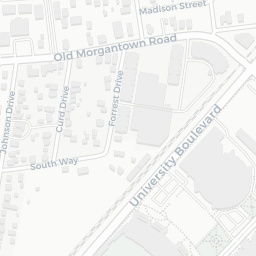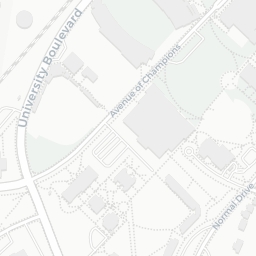Military Science and Leadership
Chapter 1
This Cadet Manual supersedes all previous cadet manuals published by this battalion.
This Cadet Manual is provided for the information and guidance of all students enrolled in the Army Reserve Officers’ Training Corps (ROTC) at Western Kentucky University.
The purpose of this manual is to promote understanding and teamwork between the cadets and the cadre of the Military Science Department.All cadets should read and follow the directives and policies contained herein.The conscientious and enthusiastic observance and support of its contents will facilitate successful completion of the Senior Army ROTC Program, attainment of a minor in Military Science, and commissioning as a Second Lieutenant in the United States Army.
The Army Reserve Officers' Training Corps (ROTC), as it exists today, began with President Wilson signing the National Defense Act of 1916. Although military training had been taking place in civilian colleges and universities as early as 1819, the signing of the National Defense Act brought this training under single, federally-controlled entity: The Reserve Officers' Training Corps.
Army ROTC is the largest officer-producing organization with the American military, having commissioned more than half a million second lieutenants since its inception.
Women have been an integral part of the Army ROTC since school year 1972-1973. The first groups of females from ROTC were commissioned in school year 1975-1976. Today, women constitute 20 percent of the Corps of Cadets and more that 15 percent of each commissioning cohort.
In April 1986, the U.S. Army Cadet Command was formed. With its headquarters at Fort Monroe, Virginia, Cadet Command assumed responsibility for more than 400 senior ROTC units, four regional headquarters, and the Junior ROTC with programs in more than 800 high schools. Cadet Command transformed the ROTC from a decentralized organization turning out a heterogeneous group of junior officers into a centralized command, producing lieutenants of high and uniform quality.An improved command and control apparatus, an intensification and standardization of training, and improvements in leadership assessment and development helped produce this transformation of pre-commissioning preparation.
Today, Army ROTC has a total of 272 programs located at colleges and universities throughout the 50 states, the District of Columbia, Puerto Rico and Guam with an enrollment of more than 25,000.It produces over 60 percent of the second lieutenants who join the active Army, the Army National Guard and the U.S. Army Reserve. More than 40 percent of current active duty Army General Officers were commissioned through the ROTC.Of even greater importance is that ROTC trained and educated officers bring a hybrid vigor to our officer corps by drawing on the strength and variety of our social fabric.Cadet Command accomplishes this by combining the character building aspects of a diverse, self-disciplined civilian education with tough, centralized leader development training.This process forges a broad-gauged officer who manifests the strength and diversity of the society from which he or she is drawn as well as the quality of strong officer leadership.
Cadet Command is also responsible for the Junior ROTC.Today, there are over 1600 JROTC units and over 274,000 cadets.Both totals are historic highs.JROTC has an enormously positive effect on our youth helping young people from across the socio-economic spectrum.Cadets graduate from high school at a higher rate, have higher GPAs, and have less incidents of indiscipline than their classmates.Although the JROTC is a citizenship program, not a recruiting tool, JROTC graduates enter the armed forces at a much higher rate than their peers.The Junior ROTC is a great program, benefiting the Army, the Nation, local communities, and above all, the JROTC cadets themselves.
SYMBOLISM The shield symbolizes the Army mission of national defense and is divided into quarters representing the four traditional military science courses comprising Senior ROTC curriculum. The sword signifies courage, gallantry, and self-sacrifice intrinsic to the profession of arms. The lamp denotes the pursuit of knowledge, higher learning, and partnership of Army ROTC with American colleges and universities. The Greek helmet is symbolic of the ancient civilization concept of the warrior scholar. The motto "Leadership Excellence" expresses the ultimate responsibility of Army ROTC in the discharge of its moral responsibility to the nation.
HISTORY OF ROTC AT THE WESTERN KENTUCKY UNIVERSITY (WKU).
The Western Kentucky University "Hilltopper Battalion" is dedicated to maintaining the traditions and history of the unit, its diverse cadet population, and the partnership schools that span southern Kentucky.
The Army ROTC program at Western Kentucky University is one of the oldest in the state. The program traces its origin to the National Defense Act of 1916 and the spring of 1917 when the United States entered World War I.At that time, male enrollment on the campus of “Western Kentucky State Normal School” was at 264 due to the great interest and participation in the war effort by the citizens and young men of Kentucky.The first military training presented on campus was given by US Army trainers to the “Student’s Army Training Corps” during the spring of 1918. In September 1918, the Board of Regents empowered President Henry H. Cherry to take steps to secure academic and vocational units of the Student’s Army Training Corps (SATC).On 1 October 1918, the War Department authorized the formal establishment of the SATC as a part of the Western Kentucky State Normal School.In addition to providing limited basic military training on campus through this program, the federal government also erected barracks to house participating students and provided other essential facilities.
These SATC units grew into the Reserve Officers Training Corps, which became a permanent part of the university on 28 January 1919.First Lieutenant Owen Ellsworth assumed temporary command of the corps upon its formal activation, and in March 1919, Lieutenant Colonel Wilford Twyman was assigned as the first Professor of Military Science and Tactics.The corps was first organized as a junior division unit and offered only two years of basic military training.
An ROTC rifle team was established and brought distinction to Western and the Cadet Corps by winning the National ROTC Rifle Match sponsored by the War Department for six consecutive years, from 1928 to 1933.But the students who desired an Army officer’s commission were required to transfer to another institution offering a senior ROTC program.Western’s junior ROTC unit was maintained until September 1935 when a senior infantry branch oriented division was organized and placed under the command of Major John Robeson.This infantry oriented program was directed toward the production of infantry lieutenants and encompassed subjects as light and heavy infantry weapons, infantry tactics, communications, transportation, physical conditioning, and leadership.A further addition to the ROTC program occurred on 4 February 1937 when the National Society of Pershing Rifles granted a membership charter to the cadet company at “Western Kentucky State Teacher’s College”.The cadet company was designated Company B, 3rd Regiment, National Society of Pershing Rifles.It was founded to enhance esprit de corps and promote the highest levels of proficiency in drill ceremonies, basic leadership, and military bearing among members of the cadet corps.Western gained further distinction in 1937 by commissioning its first senior ROTC cadet class in May of that year.Throughout the Second World War, Western continued to produce commissioned officers, many of whom served with great distinction in both the European and Pacific theaters.
With Congressional passage of the National Security Act of 1947, the U. S. Air Force was established as a separate branch of service.The Army ROTC program was modified the summer of 1947 to include an Air Force ROTC program on campus and the first Professor of Air Science, Major William N. Pace, Jr. was assigned to Western in late 1947. In 1949 Air Force ROTC became a separate organization, and both Air Force and Army instructor groups produced officers for service during the Korean War.Based on enrollment, the increasing technical complexity of Air Force equipment, and the lack of an engineering college at Western, the Air Force ROTC program was terminated in July 1957.During its ten years at Western, the program produced over 300 Air Force officers, contributing yet another dimension to the service to the nation by “Western Kentucky State College”.
In December 1953, the cadet corps petitioned the Scabbard and Blade National Honor Society for establishment of a cadet company at Western.On 16 January 1954 the Infantry Branch Program was converted to the General Military Science Program.This new program was designed to prepare senior division cadets for commissioning in any of the Combat, Combat Support, or Combat Service Support branches of the Army.The program enabled qualified cadets to enter the service branch of their choice.ROTC cadets received another benefit in February 1962 when the members of the Committee on Curriculum and Instruction and the Board of Regents approved the awarding of an academic minor in Military Science for completion of the ROTC program.
On 13 October 1964, President Johnson signed into law the ROTC Act of 1964, popularly referred to as the ROTC Revitalization Act.This Act was designed to increase the scope of campus ROTC activities and offer greater opportunities to students for participation in the ROTC program.The Act authorized a two year Advanced Course Program for qualified junior college transfer students and students who did not participate in the ROTC Basic Course to supplement the four-year program.This program would start with a six-week ROTC Basic Camp to qualify these students for entry into the Advanced Course and then be completed in the same manner as the four-year program during the students’ last two years before graduation.Other provisions of this Act included a substantial increase in the number of Army ROTC scholarships awarded by the Department of the Army each year, an increase in the monthly subsistence allowance paid to the Advanced Course cadets, payment of a clothing allowance to newly commissioned second lieutenants upon their call to active duty, and establishment of junior ROTC units in secondary schools.
In September 1964, Pershing Rifles Company B-3 initiated sponsorship of a female auxiliary organization known as the Rebelettes.This organization provided honorary sponsors for the ROTC cadet corps and established a female drill team to compete in organized drill meets against other universities.The Rebelette drill teams were highly successful in exhibition drill competitions and were selected as the national champions in 1967, 1973, and 1975.The famous Rebelette “Garter Salute” and silent drill routines highlighted their excellence in drill and ceremonies and their contributions to the esprit de corps.1964 was also the year that “Western Kentucky State College” saw a new rifle range for use by the cadet corps.In 1968 the National Rifle Association became the sponsor of the team.In 1979, the varsity rifle team became affiliated with the National Collegiate Athletic Association, continuing the long history of excellence in riflery at Western.
Western’s ROTC program added another extra curricular organization in October 1967 when the Special Forces Company was formed.Prospective members were challenged with an intensive pledge-training program.Chartered to further military excellence in tactical skills, small unit leadership, physical fitness, and techniques of unconventional warfare, the organization provided an opportunity to apply classroom skills and knowledge to realistic training situations under arduous conditions in all types of terrain and increased tactical proficiency of the corps.
The U.S. Congress furthered the opportunities for female students by authorizing females to participate in the ROTC academic program in September 1973.Western Kentucky University’s first female officer, Second Lieutenant Lynne F. Berry, was commissioned into the Military Intelligence Corps, USAR, 14 May 1977.
Beginning with the 1978-79 school year, the U.S. Congress authorized greater flexibility in the ROTC program by allowing students to be commissioned under provisions of the Early Commissioning Program.This program allowed a student with prior military experience to gain placement credit for one or both years of ROTC Basic Course and enter the Advanced Course during his freshman or sophomore year at the university.
At the completion of the ROTC Advance Course, the cadet would be commissioned and perform reserve forces duty while completing degree requirements. In May 1979, the Congress authorized another change in Army ROTC program by authorizing cadets to participate in the Simultaneous Membership Program.Under this program, ROTC cadets in the Advanced Course enlisted in either the Reserves or National Guard, were designated officer trainees, and performed the duties of a second lieutenant in their units, thus gaining valuable experience before commissioning. Both of these programs were warmly received by the corps of cadets and expanded the opportunities for the realistic preparation for active and reserve forces duty. In April 1980, the WKU Instructor Group was given the mission of establishing a new Army ROTC Program at the University of Louisville.Cadre members organized, equipped, and developed a program of instruction modeled after the WKU program.The UL program began independent operations in August 1982.
In August 1983, the Professor of Military Science retired the Pershing Rifles Company and Rebelette Auxiliary, replacing these units with the Organization of the Red Knights.The Red Knights continued the excellence in drill and ceremonies, presentation of the official colors, and demonstration of the highest standards of military bearing within the corps of cadets. The United States Army ROTC Cadet Command was organized 15 April 1986 at historic Fort Monroe, Virginia, blending the vibrancy of a new command with the traditions of the Army's second oldest continuously active installation.
In the spring of 1996, the WKU ROTC Alumni Association was established along with the induction of seven honored alumni into the ROTC Alumni Hall of Fame. November 2003 saw the addition of a Veteran’s Day Ceremony at Guthrie Tower and a partnership school.Murray State University became part of the Western Kentucky ROTC Program and began contracting cadets in the fall of 2004.In the spring of 2005, a classroom was dedicated to a WKU ROTC graduate.The MS100 room became the Captain Charles F. Thomas IV Room of Honor.
Military Science and Leadership
Diddle Arena 2027
1605 Avenue of Champions,
Bowling Green, KY 42101-1030
(270) 745-4293
Additional Information




















